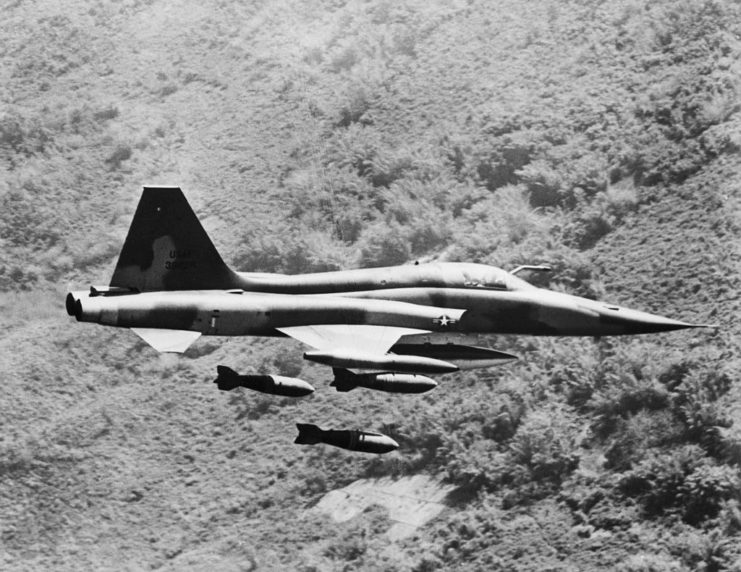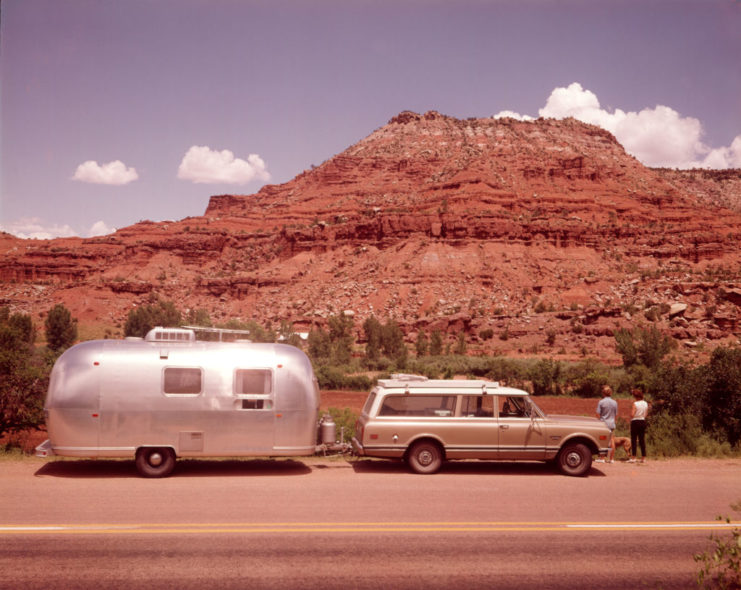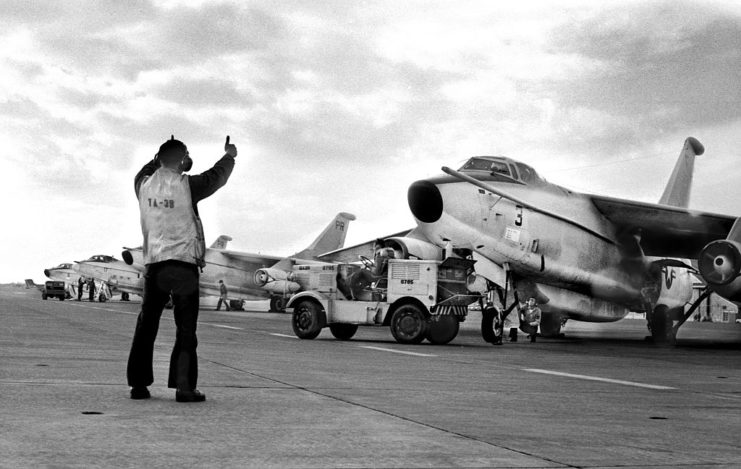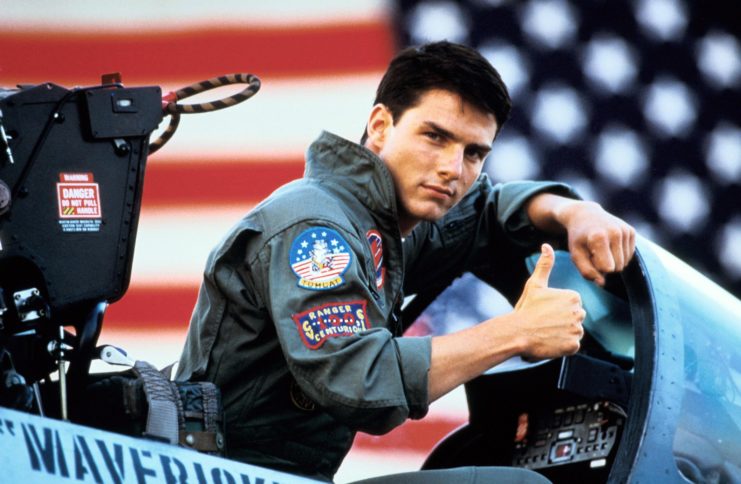
The popular Tom Cruise movie Top Gun debuted in theaters in 1986, and features Cruise and his co-stars attending the US Navy’s TOPGUN school – officially known as the Strike Fighter Tactics Instructor program. It was an immediate hit, and the service capitalized on this success. It sent recruiters to cinemas across the United States, hoping to convince young people to enlist.
Here is the history of the Navy’s elite TOPGUN school.
The US Navy evaluated its aviators after Operation Rolling Thunder
From 1965-68, in the midst of the Vietnam War, the US ran Operation Rolling Thunder. The bombing mission faced severe resistance from North Vietnamese troops flying Soviet-built MiG jets and using surface-to-air weapons. The effective air defense mounted by the North Vietnamese forced the US to end the operation in 1968, with it widely considered to be a failure.

A year after, the Navy published the Ault Report, following an investigation led by Capt. Frank Ault. It concluded that the Navy’s failures during the operation were due to pilots not being properly trained in air combat maneuvers. The US Air Force concluded its own issues were caused by technological problems.
The Ault Report recommended the Navy open a school to better train its pilots.
The TOPGUN school opened in 1969
The TOPGUN school, then known as the Navy Fighter Weapons School, officially opened in March 1969. The Navy found it was important to have the best pilots acting as instructors, and named Dan Pedersen as its first head instructor. Pedersen, who served in Vietnam, was adept at flying a number of military aircraft, including the Douglas F4D Skyray and the McDonnell Douglas F-4 Phantom II.
He recruited eight other pilots to help him train the Navy’s future aviators.
The aim was “to train aircrew in all aspects of aerial combat to be carried out with the utmost professionalism.” According to an exhibit onboard the USS Midway (CV-41) Museum, “the four-week course started with a team of instructors covering US and Soviet aircraft types, weapons systems, and fighter training tactics in a 50-foot-long metal trailer at [Naval Air Station] Miramar.”
The TOPGUN course is grueling
The TOPGUN school was, at first, run on a shoestring budget. Its first headquarters was a stolen Airstream trailer. The students were given what was considered a Master’s level education on everything they needed to know about both their own aircraft and those flown by the enemy.
The tactics taught were constantly updated as America’s opponents changed their equipment and tactics.

There was also little downtime for students and instructors. Pederson later explained:
“We actually worked seven days a week probably, starting at 4:30 in the morning. On Fridays, I let the youngest guys who lived in La Jolla out early, so they could party — that’s what young guys are supposed to do — but most of us never got home during the week. I spent many nights sleeping in my car.”
Results came fast
Once the Navy aviators were trained, they returned to Vietnam, and it didn’t take long for the methods taught in class to bear fruit. Prior to the program, the Navy kill-to-loss ratio against the North Vietnamese MiGs had been around 2:1. After the program, this number rose from 12:1.
By comparison, the Air Force, which had not instituted a training program, actually saw its kill-to-loss ratio drop.

The Navy took notice of the success. TOPGUN did not have to remain in a stolen Airstream; the school soon had increased funding that allowed for additional aircraft, staffing and infrastructure. In 1996, it was moved to Naval Air Station Fallon, Nevada, where it merged with the Naval Strike and Air Warfare Center – now known as the Naval Aviation Warfighting Development Center.
The program is still in place today, over 50 years since its inception, showing the continued value it gives to the service.
Top Gun lets the public in on the story
Author Ehud Yonay wrote an article, titled Top Guns, for a 1983 issue of California Magazine. The piece focused on the TOPGUN school and the large number of ace fighter pilots living in San Diego. The decision was made to produce a movie based on the article, and filmmakers reached out to the Navy for help.

Involved in the making of the film was Pete “Viper” Pettigrew, a veteran naval aviator who’d served as a TOPGUN instructor. The movie was a massive hit, and many in the US military approved. Dan Pederson revealed that, while he was worried the film didn’t capture the high stakes involved in aerial warfare, it did feature “some of the best footage of tactical airplanes ever captured.”